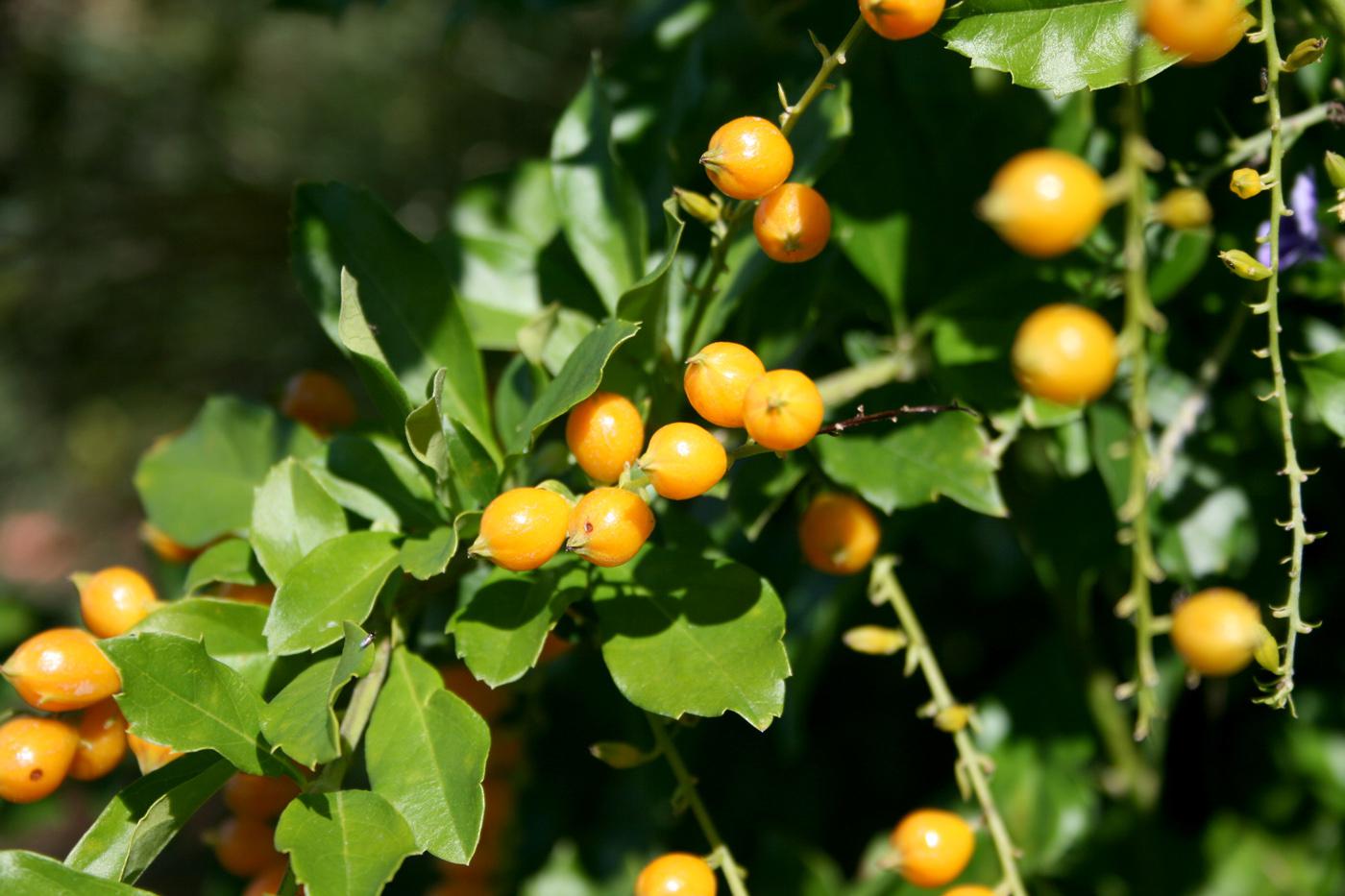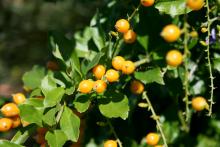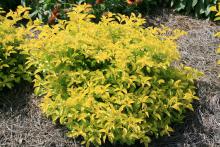Information Possibly Outdated
The information presented on this page was originally released on June 25, 2012. It may not be outdated, but please search our site for more current information. If you plan to quote or reference this information in a publication, please check with the Extension specialist or author before proceeding.
Tropical Duranta adds interest to area gardens
A native of the tropical regions of the Caribbean and Central and South America, the Duranta is sure to generate interest in your landscape.
Duranta is commonly called pigeon berry, and it has an arching growth habit with bluish flowers. It produces golden fruit that can feed our feathered friends.
The native plant can reach small-tree status, growing up to 25 feet tall. That’s too large for many of our Mississippi gardens and landscapes.
But plant breeders have solved that problem. They have developed a couple of really nice Duranta selections with a smaller growth habit.
Sapphire Showers is a version that has a more compact, upright habit. It produces tube-shaped flowers from spring through summer. The blue to violet flowers are produced in cascading clusters. Each flower has a white picotee edging that intensifies the look of the flower color.
The fruit of Sapphire Showers is yellow-orange. The fruit contrasts beautifully with the flowers, as they are often seen together through the season.
A Duranta selection that can brighten any landscape is Cuban Gold. The foliage of this variety is a blend of chartreuse and golden yellow. It grows 3 feet tall and wide. I’ve heard Cuban Gold described as a tropical boxwood, and it does make a gorgeous edge or hedge plant.
For a formal look, feel free to prune it just like you would boxwood. Allow normal growth for a more casual appearance. Towards the end of the season, it may produce lavender flowers, adding color contrast to the foliage.
Cuban Gold is a good choice for combination containers, where it can be used as a filler plant. In fact, Cuban Gold Duranta will last for several years when grown in containers.
For the best landscape effect, plant Duranta in full sun or no more than partial shade. Amend the landscape soil with organic matter to increase drainage, especially in tight, clay soils. Feed monthly with water-soluble fertilizer to keep your Duranta in peak form.
Duranta is very tolerant of pruning, so don’t be afraid to give your plants a trim every once in a while to keep them neat.
These plants are hardy in zones 9 to 11, but they will die back to the ground after a frost or freeze. In northern Mississippi, Duranta will die back to the ground each winter but will rebound the following spring. Fruit production may be limited in the northern counties.
Treat your Duranta as you would a butterfly bush, and prune the aerial stems back to about 4 inches long each spring before the foliage emerges.
Find a place in your container or landscape for this tropical native and enjoy the beauty it brings to your garden.









